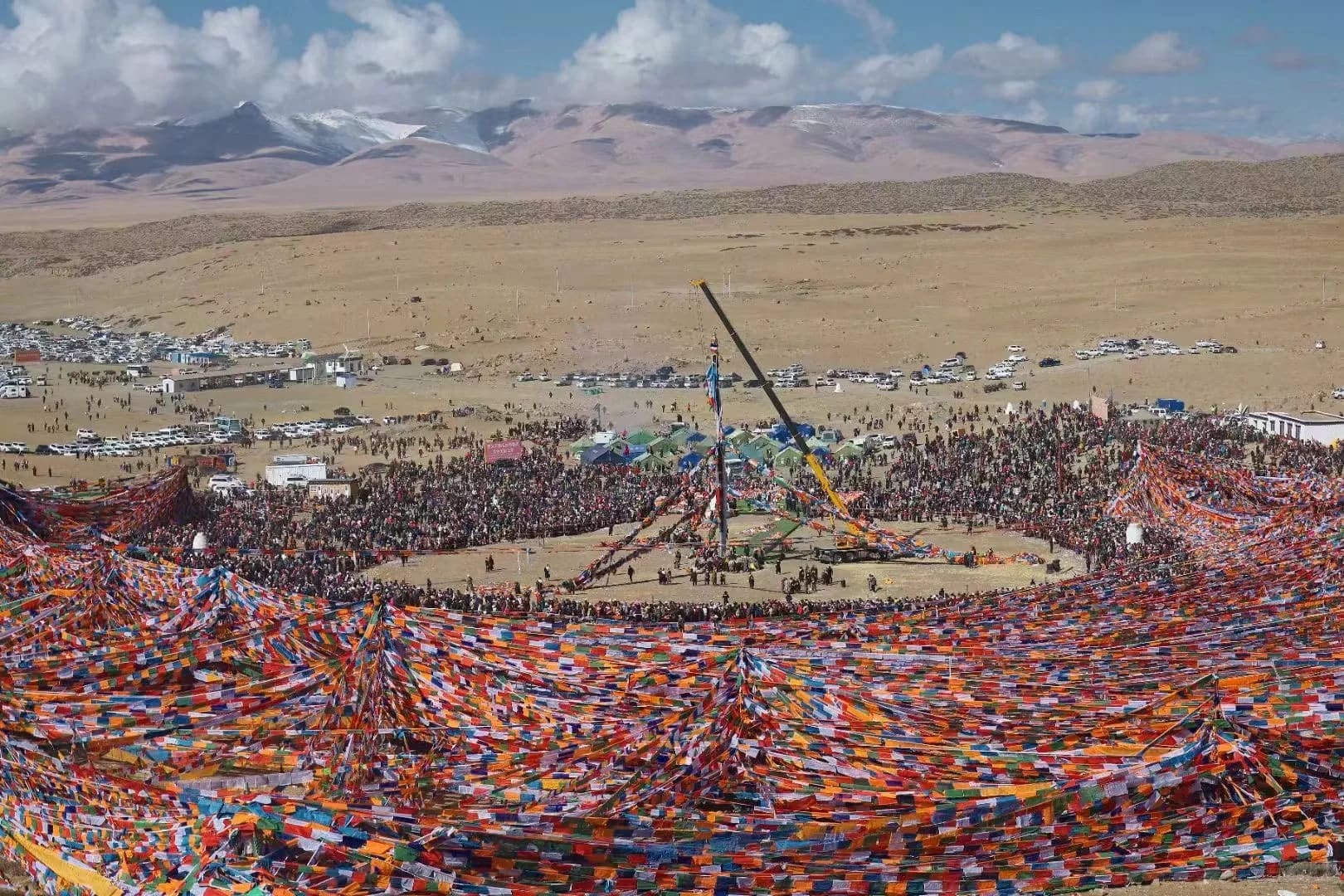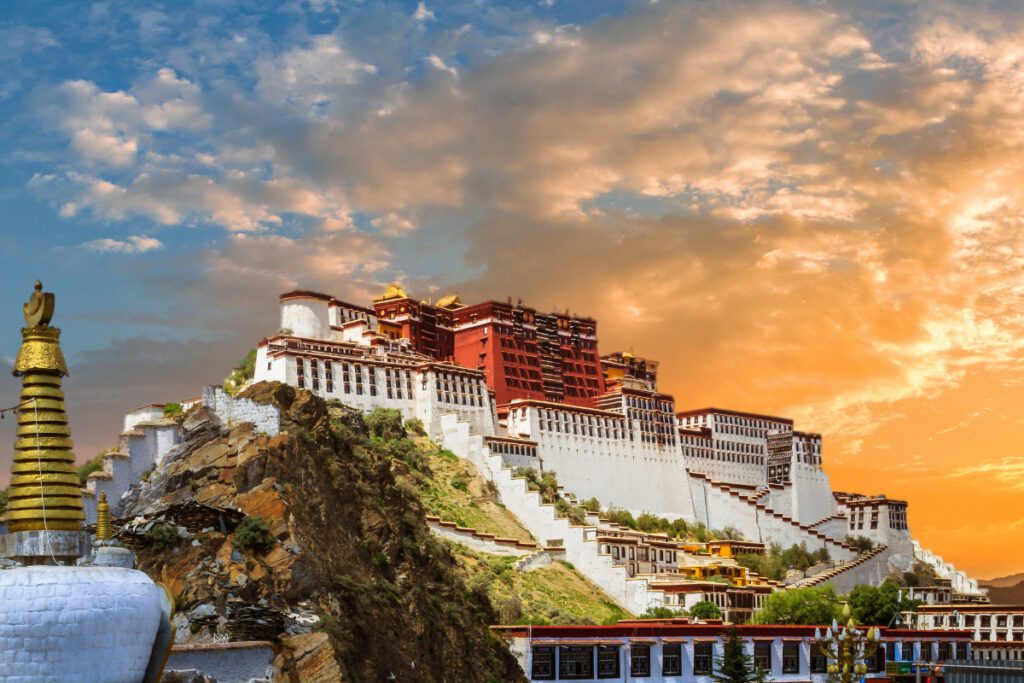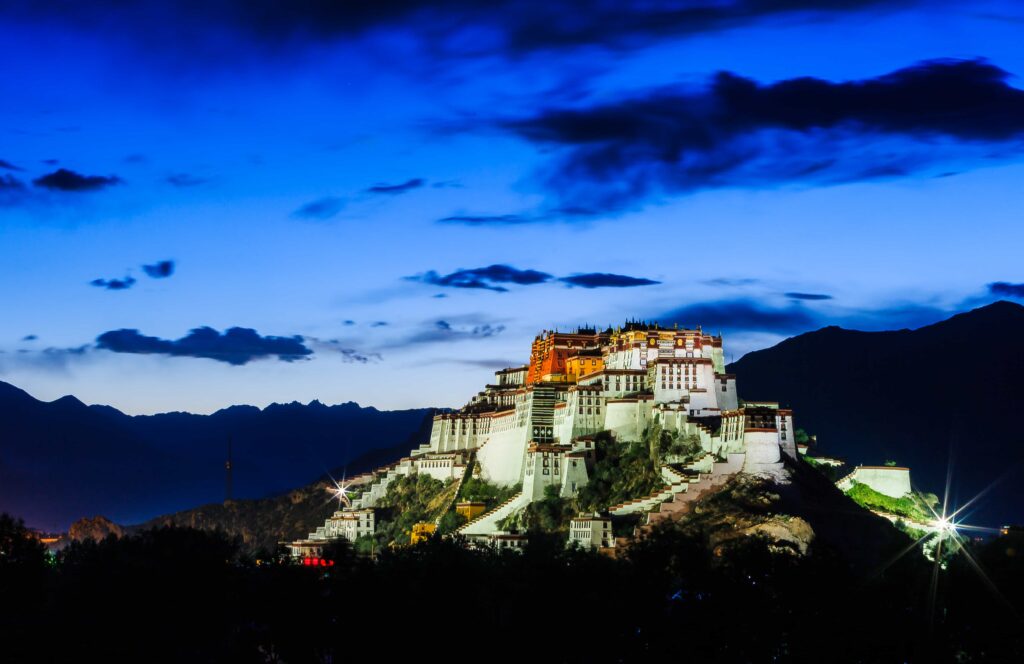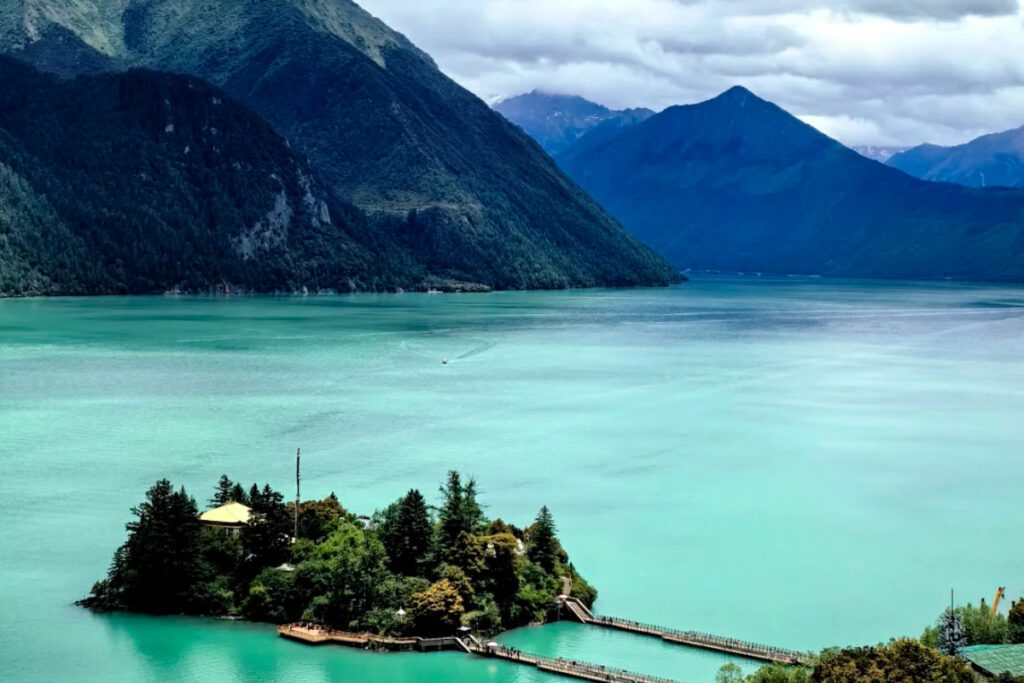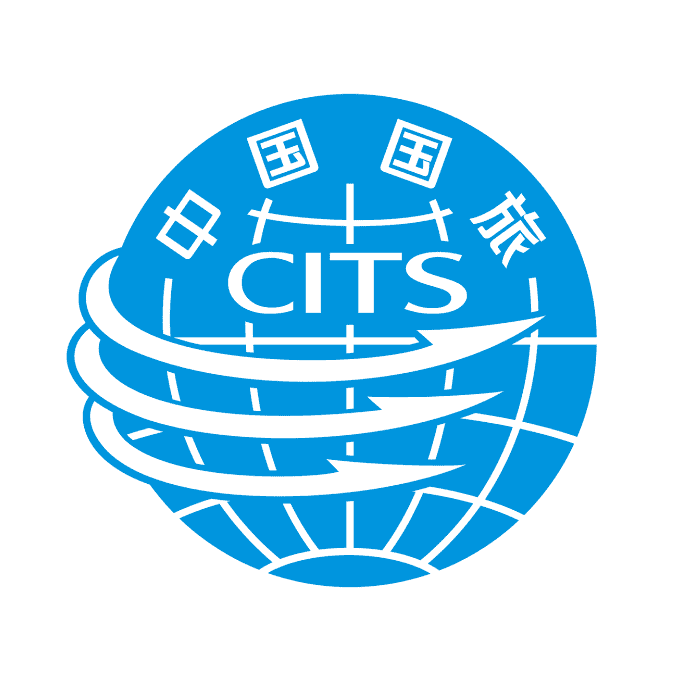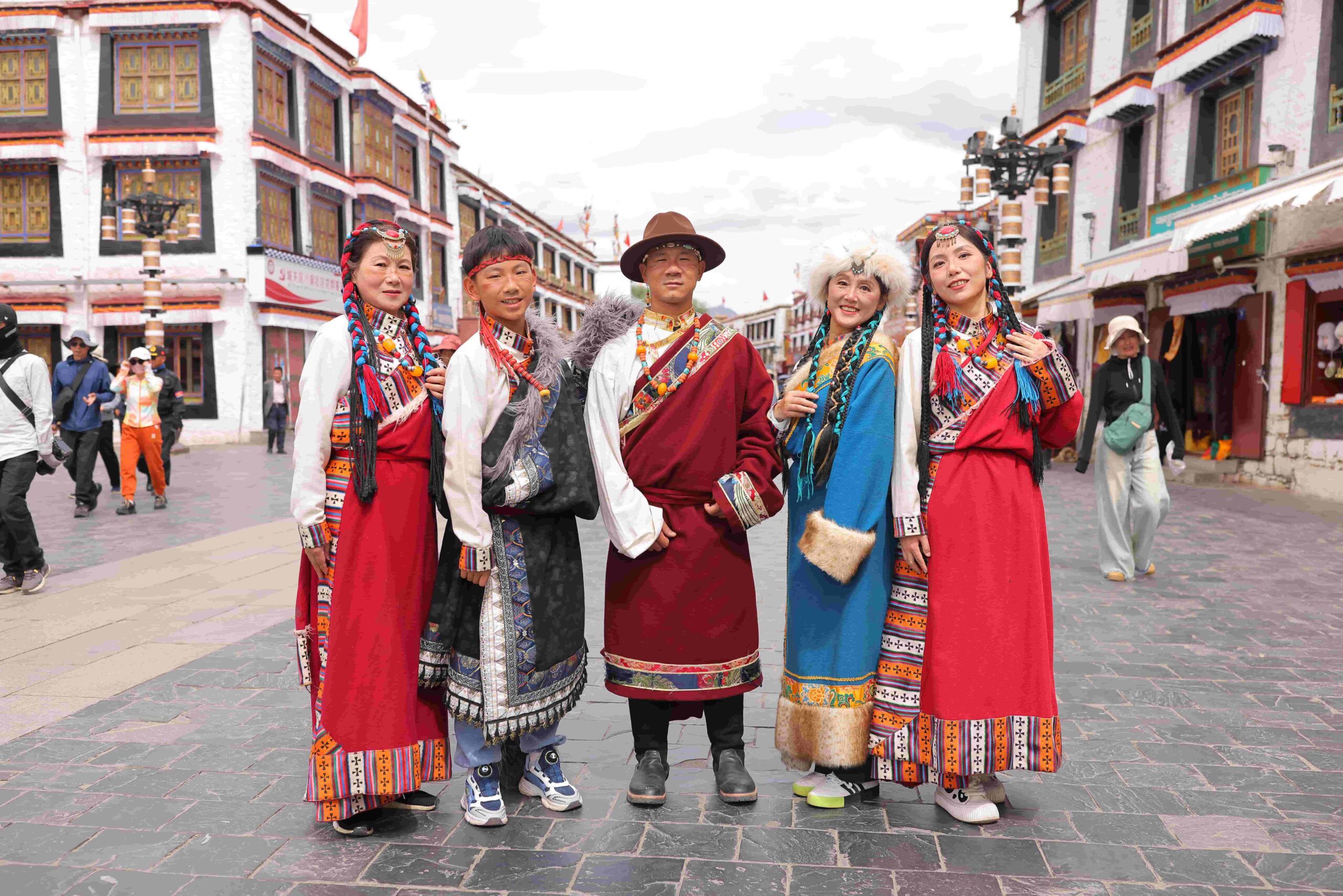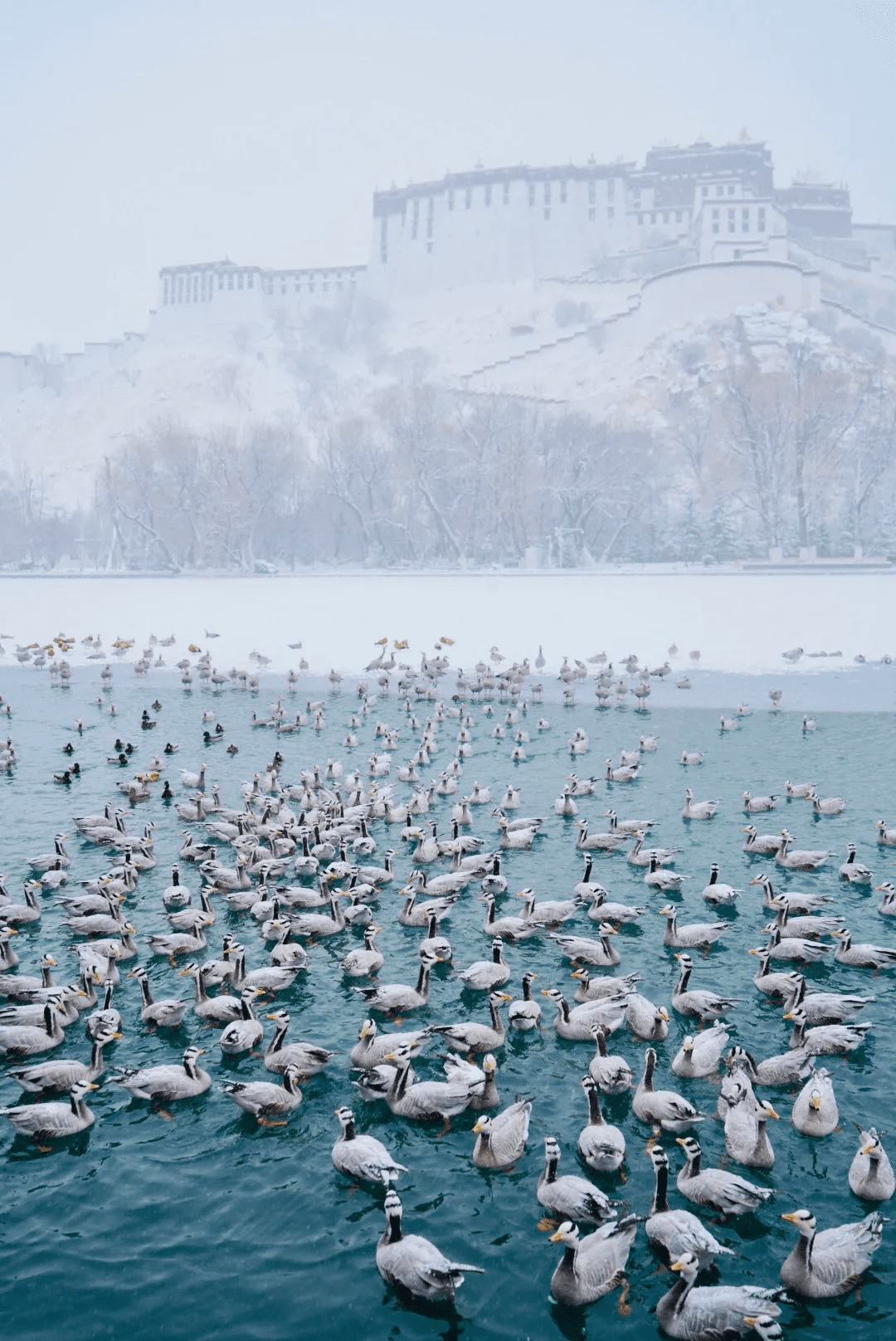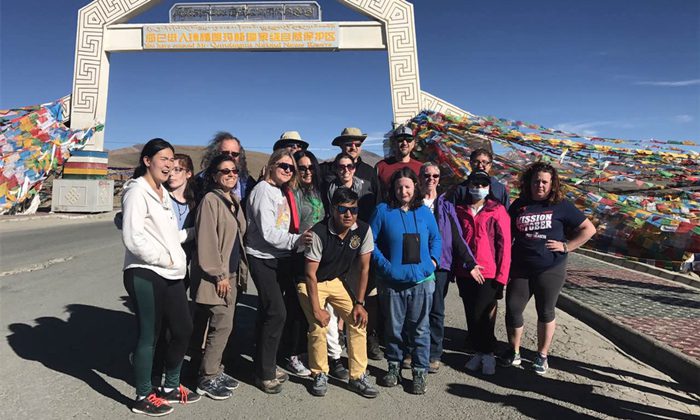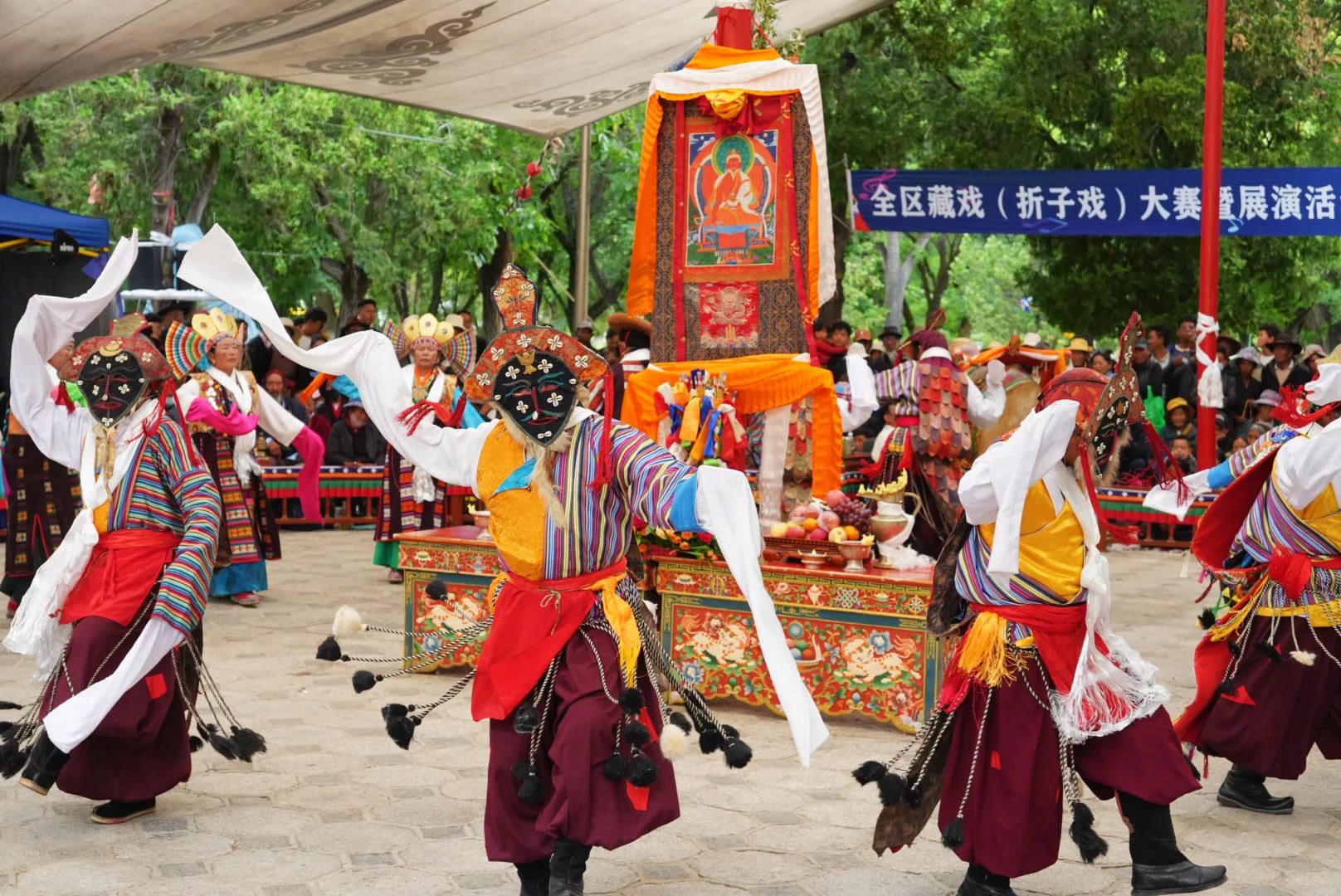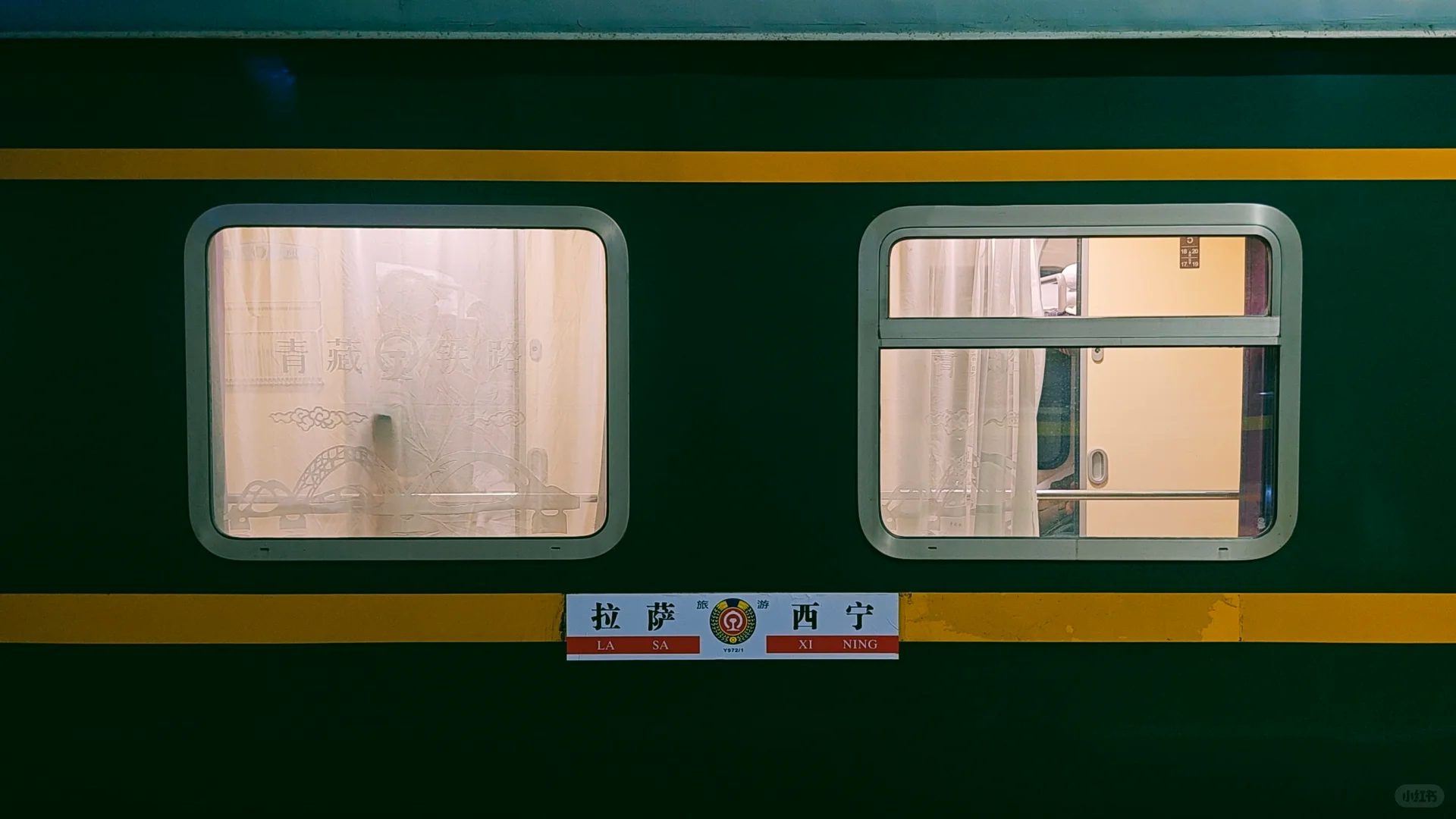Every year on the 15th day of the 4th month of the Tibetan calendar, it is the most sacred festival of Tibetan Buddhism in the year - [Saga Dawa Festival] also known as the Buddha Month . Vesak in TibetThis day is not only the birthday of Sakyamuni Buddha, but also the day of his enlightenment and nirvana. This day is not only the birthday of Shakyamuni Buddha, but also the day of his attainment of enlightenment and nirvana. The whole of Tibet is immersed in an atmosphere of piety, with scripture recitations echoing through the streets and lanes, and believers, holding transepts and draped in khaddar, praying for peace and compassion under the blue sky, where wind-horse flags are flying.
Saga Dawa is regarded by Tibetans as the "Month of Merit," a month when the merits of good deeds are magnified a hundredfold. For those who believe in Tibetan Buddhism, this is not just a festival, but a profound spiritual practice - from "turning to the monastery" to "turning to the mountain", every step and every bow is a path to spiritual purification.
I. Origin of Sakyadhwa: The Three Great Sacred Events of the Buddha
Saga Dawa, also known as Wesak Day.(Vesak Festival)In Tibetan, it means "month of the Saga Star" and is the name of the fourth month of the Tibetan calendar. According to Buddhist texts, Shakyamuni Buddha was born in this month, attained enlightenment in the same month, and passed into nirvana in the same month. Therefore, Tibetans believe that this is the most virtuous time of the year.
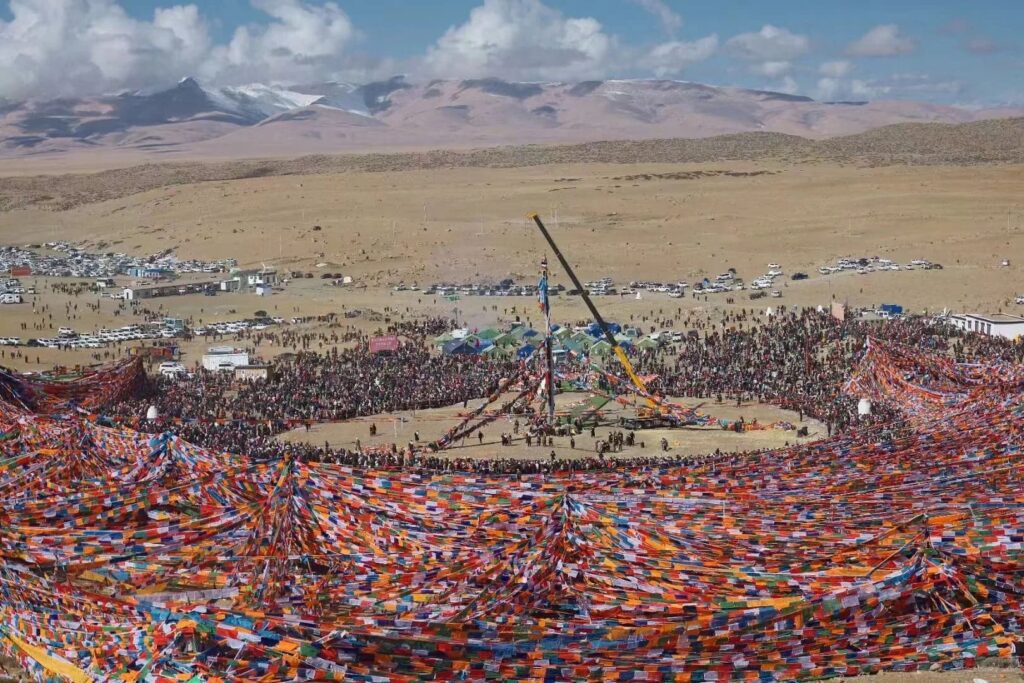
From the first day of the fourth month until the fifteenth day of the fourth month of the Tibetan calendar, various blessing activities take place throughout the Tibetan region. Chanting in monasteries, devotees in the streets, people stop killing, eat vegetarian, release, offer lamps, give alms, and participate in the most emblematic practice, thechange temples.
📅 The Sagadawar festival of 2027 was June 18(corresponding to the 15th day of the 4th month of the Tibetan calendar).
II. What is "Turning to the Temple"? Steps of Faith
In Tibetan Buddhism, "transmigration" is a practice and an expression of prayer. Believers make a clockwise circuit of a temple, stupa, or sacred mountain, which is known as "turning the sutra" or "turning the temple". This is a symbol of surrounding the Dharma and keeping the Buddha in one's mind. It is believed that each revolution will purify sins and accumulate merits.
During Sagadhava, the entire Lhasa is surrounded by the feet of devotees:
- your (honorific)Most Famous Turning Temple RoutesIt is [Barkhor Street outside the Da Zhao Temple].
- You will see the devotees holding the brane in their hands, chanting "Hum Mamma Abhimanyu" on their lips, and walking around the street in a clockwise direction with their feet firmly planted on the ground. Some devotees even choose to "throw themselves on the ground", bowing step by step, and the whole street is covered with their faith and sweat.
Turning to the temple is not only a religious ceremony, but also a practice of dialoguing with oneself. Such images can be seen everywhere during the Saga Dawa Festival, and have become one of the most touching scenes in the eyes of travelers.
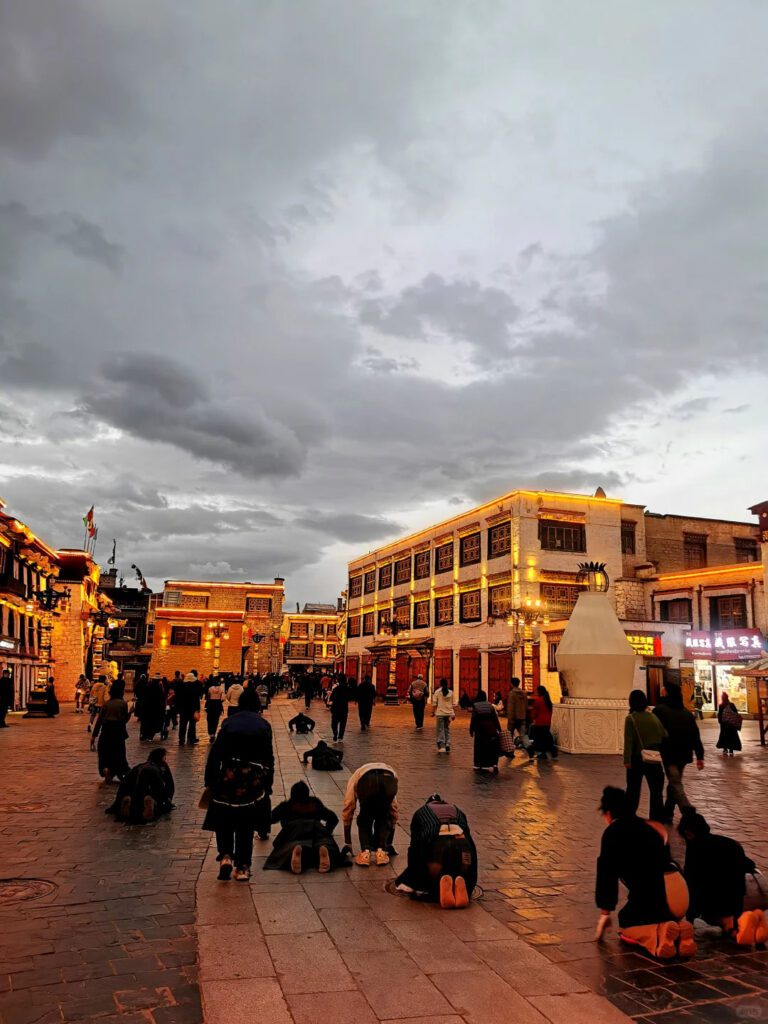
Simply put:
"The practice of walking around a temple in a clockwise direction and reciting prayers.
It symbolizes respect for the Buddha and the purification of the mind, and is also considered an important means of accumulating virtues and performing good deeds.
From Monastery to Mountain: The Sublimation of Faith in Tibet
For Tibetans, "turning a monastery" is a daily practice, while "turning a mountain" is the most solemn pilgrimage in their lives.
Every year during the Saga Dawa Festival, thousands of devotees not only circumambulate the temples, but also embark on an even more distant journey - to the sacred mountain of Gang Rinpoche in the Ali region of Tibet.

Considered the center of the world, this sacred mountain enjoys a high status in Hinduism, Buddhism, Jainism and Benjaminism.
Buddhists believe that the holy land of Kalimpoche is the place of the "Vajra of Triumph", and that a single turn around the mountain can purify the karmic obstacles of past lives, which is of immense merit.
The entire route is about 52 kilometers, with the highest point being the Drolma La Pass (5,630 meters). Pilgrims either walk or bow in worship, completing a circle in three days; some devotees even make 13 consecutive revolutions, turning their faith into action.

IV. The Feast of Sakyadhwa: A Deluge of Faith
On the day of Saga Dawa, grand celebrations and prayers are held in Lhasa, Rikaze and Ali.
The most representative of these is the "Raising of the Great Sutra Streamer" ceremony held at Drepung Monastery in the suburbs of Lhasa.
When tens of thousands of people gathered, monks reciting sutras resounded through the valley, a huge Shakyamuni thangka unfolded in the sunlight, at that moment, even the wind carried the breath of piety.
In the vicinity of Tachin Village in the Ali region, thousands of pilgrims gather to prepare for the mountain pass. Among them are ascetics from India, believers who have traveled on foot from Nepal, Tibetan farmers, monks and tourists. The entire area at the foot of the sacred mountain is lined with tents and smoke, a solemn and magnificent scene.

V. Main Events of Saga Dawa Festival: Faith in Action
Saga Dawa is not only a festival, but also a month-long practice period. During this period, devotees express their devotion to the Dharma through various forms of action, including [sutra transmigration], [simmering], [alms giving], [mountain transmigration], [fasting], and [releasing], etc., each of which carries a deep religious significance.
1. Transmigration
Sutra transmigration is one of the most common practices during Sakyamuni.
Devotees will walk and pray along fixed routes, and there are three famous routes in Lhasa:
- Inner Turning Line: Walk around the main temple along the center of the Da Zhao Monastery;
- Transit Line: Walk along the Barkhor Street for a week around the Da Zhao Monastery;
- External Turning LinesIt is about 20 kilometers long and takes a whole day to complete, passing by the Potala Palace, the Medicine King Mountain, the Gongdelin Temple, the Dragon King Pool and the Xiaozhao Temple, and other holy places.
Simply put:
Sutra-turning is a clockwise procession around a temple or a holy place to pray, symbolizing that one's heart follows the Buddha's direction, and that one is accumulating virtues and cultivating blessings.
And during Sagadawar, the merits of transmigration are believed to multiply.
2. Simmering Mulberry
The "simmering" ceremony is another important activity during the Sagadawat Festival.
Devotees will burn cypress sticks and spread tsampa at temples and mountain passes to let the smoke rise as a sign of prayer.
This is a traditional way for Tibetans to pray to the spirits for peace and blessings.
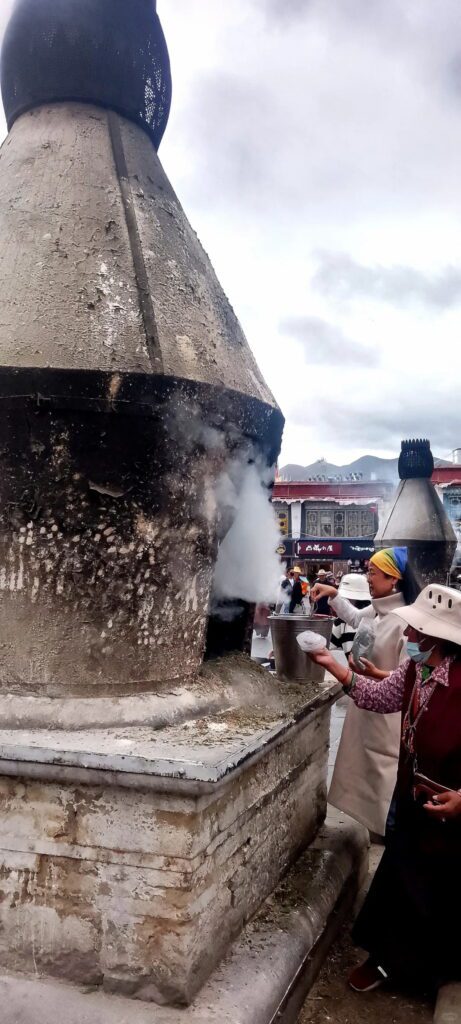
3. Giving
This passage describes the Poor Man's Day (སྤྲོས་བཅད་དུས་, meaning "Festival of Giving" in Tibetan), a very distinctive folk festival in Tibet.
It is traditional for the rich to give to the poor, and the 15th day of the 4th month of the Tibetan calendar is the culmination of good deeds, on which Tibetans are kind and charitable, and which is why the festival is also known as the "Day of the Poor". This day falls on the 15th day of the 4th month of the Tibetan calendar, which in Tibetan Buddhism is considered to be the day of Buddha Shakyamuni's birth, attainment of enlightenment, and nirvana all on the same day, and is also known as the "Saga Dawa" festival.
The whole month of April is regarded as the "Month of Merit" and April 15 is the peak of good deeds and virtues.
Since this day emphasizes giving and compassion, it is popular for the rich to give to the poor, so it is commonly known as the "Poor Man's Day".
Therefore, many Tibetans will be on this day:
- To give food or money to monks, beggars, and the poor;
- Life Release, Light Offering, Chanting and Praying;
- Some families even prepare tsampa, milk tea, ghee and other food to distribute to passers-by.
4. Transmigration in Gang Rinpoche
One of the highlights of the Saga Dawa Festival is the "mountain trekking" activities, especially the pilgrimage to Feng Rinpoche (Gang Rinpoche).
Since the beginning of the fourth month of the Tibetan calendar, devotees arrive in the region of Ali and reach the climax on April 15th.
This event is not only the pinnacle of Tibetan faith, but also attracts Buddhists and travelers from all over the world.
5. Vegetarianism
During Saga Dawa, many devotees choose different lengths of fasting practices: three days, seven days or even a whole month.
During this period, I ate vegetarian food, abstained from killing, and recited sutras to purify my body and mind and cultivate compassion.
It is also an important way for Buddhists to show their respect for the Buddha and their faith.
6. Release of life
Life release is a very symbolic act of Sakyadharma.
Devotees will buy fish, birds and other animals from the market and release them into nature to show compassion and respect for life.
On the banks of the Lhasa River, it is common to see groups of believers putting fish into the river, and Tibetans buying poultry and releasing them into the forest.
Tibetan Faith Reminder:
Life release is not a formality, but a practice of compassion.
Saga Dawa emphasizes "respect for life," and because of this, Tibetans do not eat fish or meat on weekdays.
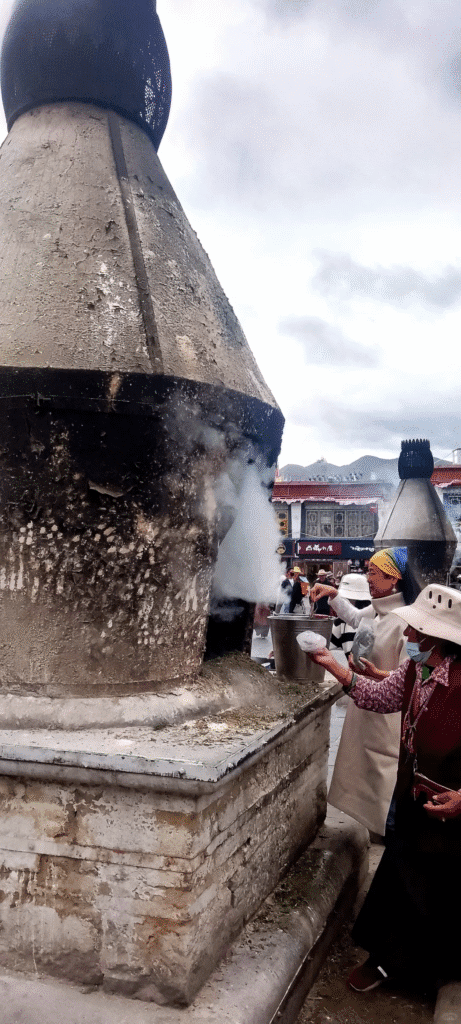
The Year of the Horse: The Legend of 100,000 Times the Merit
According to Tibetan legend, the sign of the guardian of Mount Kailash is "horse", so every year is the "Year of the Horse" for the sacred mountain.
Devotees believe that by completing the transmigration in the Year of the Horse, their merit can increase 100,000 times.
This belief is the reason why tens of thousands of pilgrims flock to Gang Rinpoche every Saga Dawa Festival in the Year of the Horse.
The road between the valleys was filled with people praying, and the streamers, khadas, Tibetan incense, and chanting of sutras intertwined into a gorgeous picture.
Many people travel months in advance just to complete this soul purification on the most auspicious day.
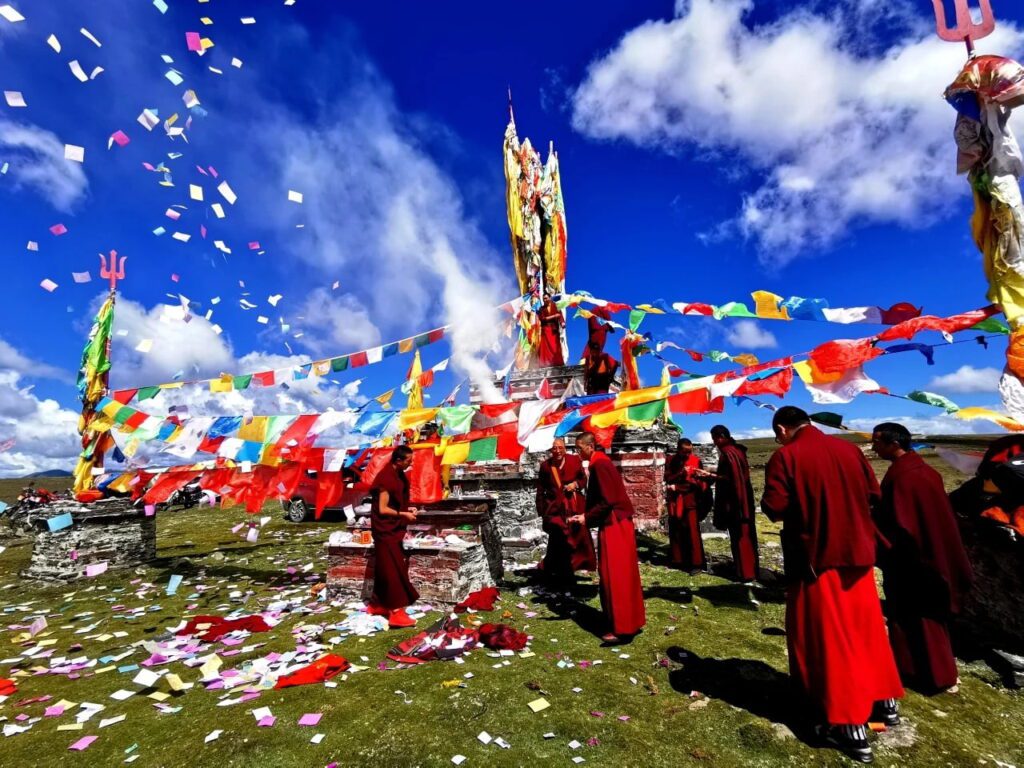
As long as our tours are located in high altitude areas and conditions permit, we will arrange for you to stay in oxygen-supplied rooms or provide centralized oxygen-supplied facilities, so that you can sleep peacefully at night in the plateau.
VII. Challenges during Saga Dawa: The Reality of Pilgrimage Fervor
The Saga Dawa Festival and the Year of the Horse are so special that the area around the Saga Monastery and the region of Ali is overflowing with people during this period. Due to the remoteness of the area, limited accommodation resources, and the government's approval process for foreign vehicles and people entering the area, the actual arrangements are extremely challenging.
Common scenarios include:
- Hotels and inns were full months ago.
- Early application for government approvals and green taxes is required.
- Tight supply of vehicles and drivers
- Mountain road closures or sudden weather changes
Many pilgrims, even if they plan ahead, are often unable to travel due to lack of accommodations or limited routes.
Therefore, if you want to complete the Gang Rinpoche Transit on Saga Dawa, it is important to book your trip at least three months in advance and ensure that you have an experienced team of Tibetan operators to assist you.
Special reminder:
Sakya Monastery is one of the key pilgrimage sites during the Sagadawar festival.
There are very few hotels in the area and most of them do not accommodate foreign guests.
If the itinerary includes a visit to the Sakya Monastery, please be sure to confirm your accommodation in advance!!!! Please make sure to confirm your accommodation in advance!
This is to avoid being unable to move in due to control or full capacity at that time.
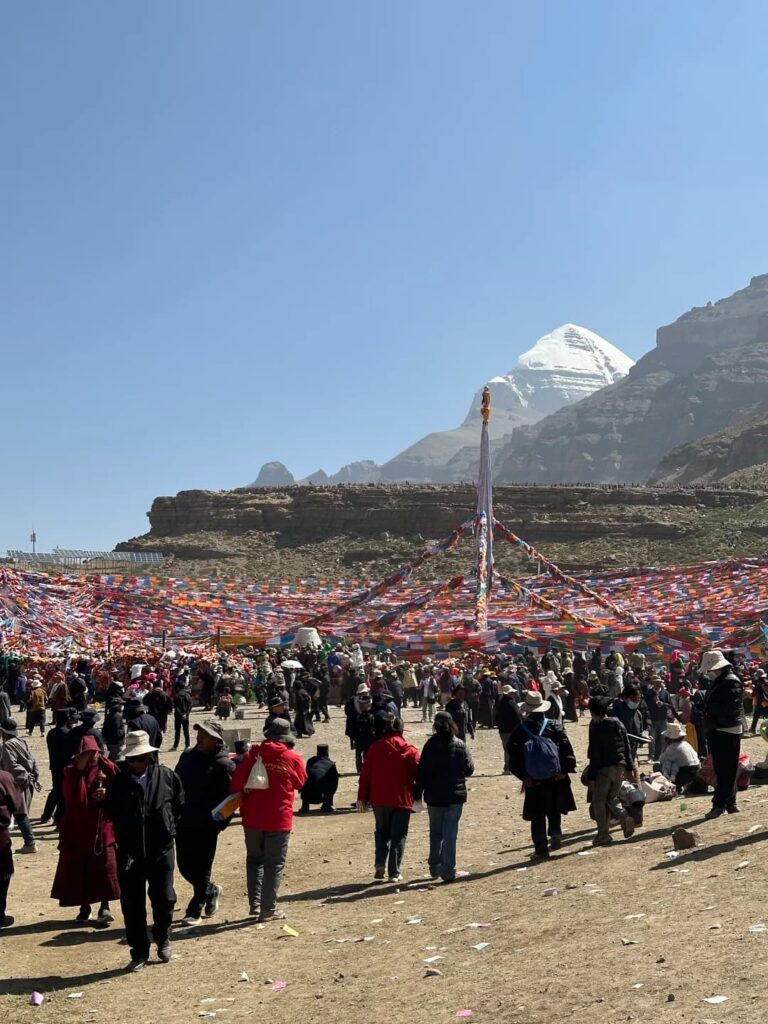
The Meeting of Faith and Travel: A Baptism of the Soul
At the foot of Gang Rinpoche, you will see a touching scene: an old man holding a Bible roller, a young man carrying an incense burner, a mother leading her child to kowtow step by step; some people chanting sutras silently, some people releasing a wind-horse flag, and some people smiling and tearing up in the snow.
At that moment, you will realize that "turning the mountain" is not just circling the mountain, but an inner purification.
Every breath and every footstep is a process of dialoguing with heaven and earth, faith and self.
This journey begins with faith and ends with action.
The Horse Saga Dawa Festival is one of the most extraordinary spiritual events in more than a decade.
If you miss this year, you will have to wait another 12 years for the next one.
This is not only a trip, but also a practice; not only the shock of the scenery, but also the echo of the soul.
Let's turn the prayer wheel of faith together on the plateau where the wind horse flag is flying.
Make your most sincere wish at the center of the world, the Gang Rinpoche.
Should You Buy Oxygen in Tibet? The Truth About “Oxygen Inhalation” and How to Do It Safely
Don't be taken to buy expensive oxygen bottles, only travel companies will tell you the truth!

